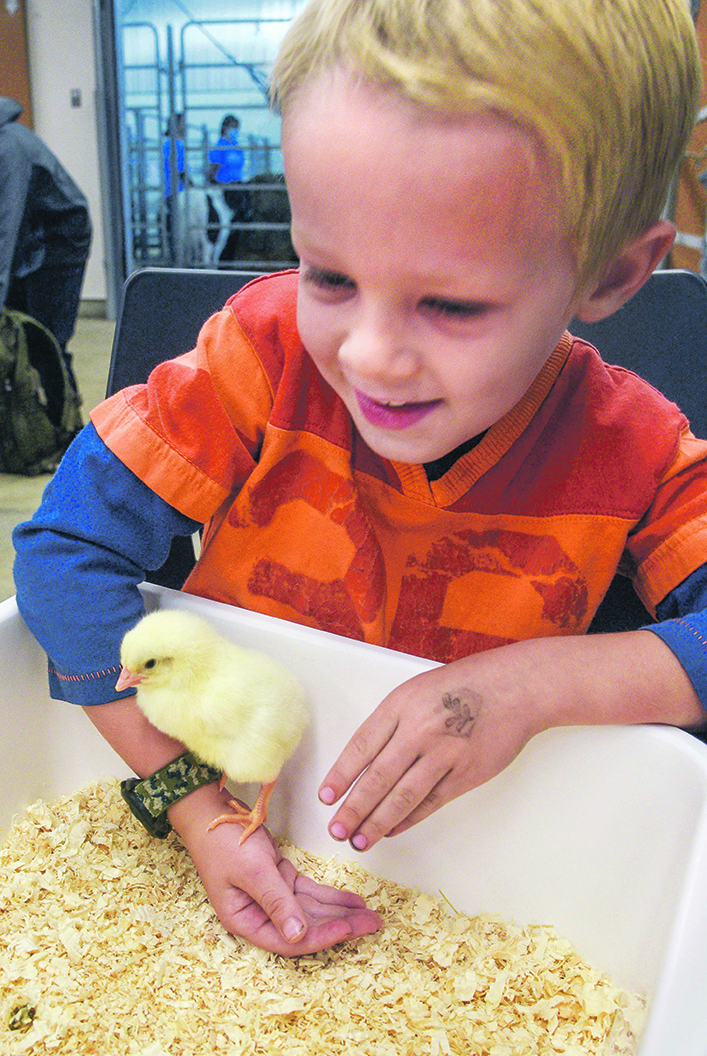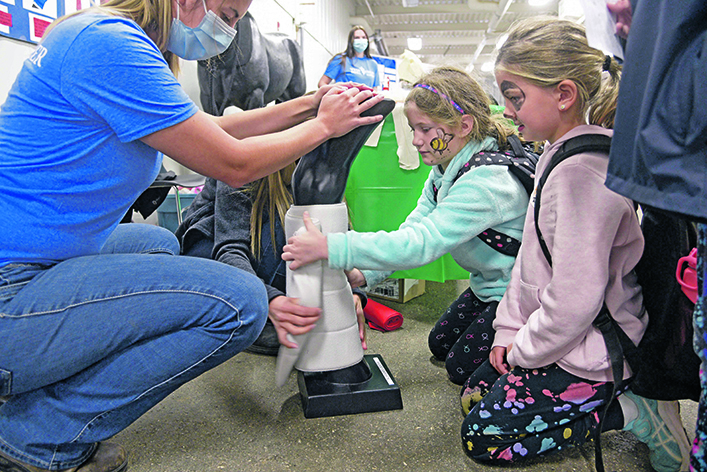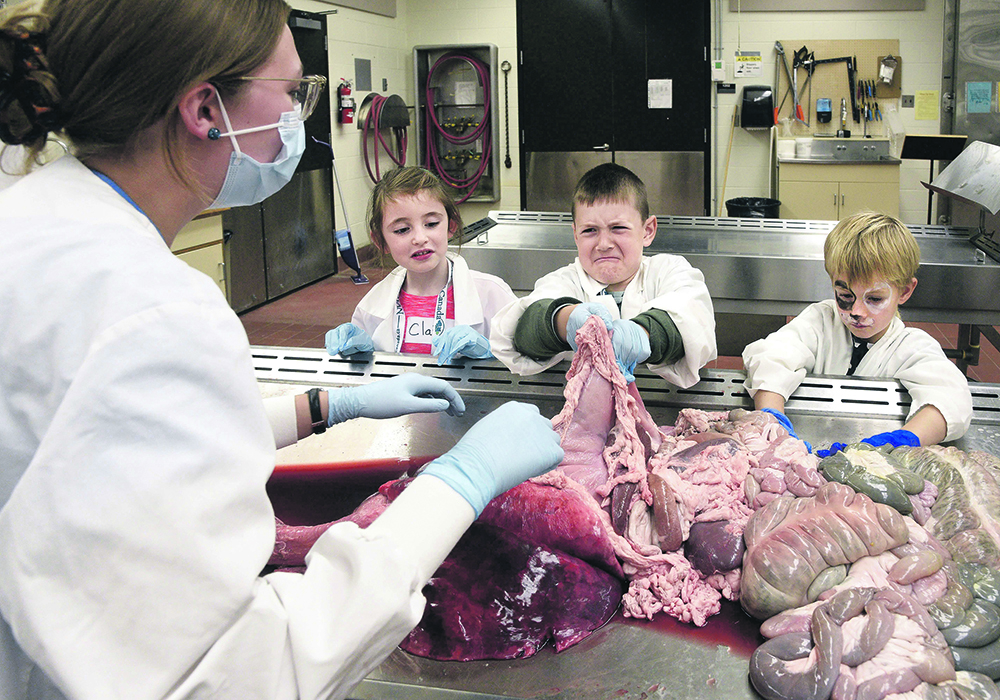U of S’s Vetavision is seen as an opportunity to teach school-age children about veterinary medicine and agriculture
Nina Zakaluzny “most definitely” wants to be a veterinarian.
“I love animals and I love learning new things every day,” said the nine-year-old after she poked and squeezed a pig’s gallbladder and liver in the anatomy laboratory during the Western College of Veterinary Medicine’s Vetavision event Sept. 23-24.
“I just have a connection with animals that I’ve had since I was little.”
This is the first time Zakaluzny and her mother, Tanya, of Asquith, Sask., have attended the event, which is usually held at the University of Saskatchewan every second year.
First, second and third-year veterinary students organize the event but faced hurdles because it was last held in 2019, after which the pandemic affected plans.
“We weren’t here during the last Vetavision, so a huge proportion of our student body has never experienced the event, which is difficult because we’re setting it up without knowing what it looked like before. We’ve never seen it in action,” said third-year student Maggie Omer-Canitz, a member of the Vetavision executive committee.
Chris Clark, associate dean academic at the WCVM, said the event is entirely run by students.
“I think the students that are here love this career choice and they’re excited by it. They remember how excited they were by it before they came here and that opportunity to share that excitement and open the doors and let people see a little bit of what goes on in this building.
“It’s been great to see the hundreds of kids coming through here, so excited by this opportunity to find out about what a veterinarian does. And on the flip side of that is learning a little bit about agriculture,” he said.

This year’s event had 26 booths. They featured llamas and alpacas, miniature horses and a colony of honeybees that could be viewed up close through a plexiglass box.
Also making their debuts were the equine treadmill demonstration and tours of the Rayner Dairy barn.
Traditional hands-on favourites included holding baby chicks, bandage wrapping a model horse’s leg and exploring the internal organs of sheep, cow and pig cadavers.
The fistulated cow is always a crowd favourite. After donning a plastic arm sleeve, visitors can reach inside the animal’s stomach.
“People have a chance to feel the inside of the rumen of a cow. It’s a really neat experience,” said Omer-Canitz.
While many booths are created to capture the interest of children, there were several aimed at young adults who are interested in the more unique aspects of veterinary medicine.
“That’s where we see the career booths, like ophthalmology and oncology, where you can take a deep dive into one subject and learn a lot about it.

“That all comes together with the pre-vet night where we talk to some prospective veterinary students about what it takes to get into the veterinary profession, the admissions process and then the Q & A with current students. It’s that extra step up for people who are really serious about this and want to know more,” said Omer-Canitz.
Clark highlighted the panel of veterinarians who discussed their different career paths and the panel of current veterinary students who spoke about their own experiences in the program.
Omer-Canitz said a main goal of the event is connecting with the public and inspiring some creativity and excitement in the profession.
“Some of the public know what goes on quite intimately and some have no idea what goes on in a veterinary clinic. So, this is a good opportunity for them to see that we’re people too, this is not a scary profession and we’re all working towards making animals happier and healthier.”


















